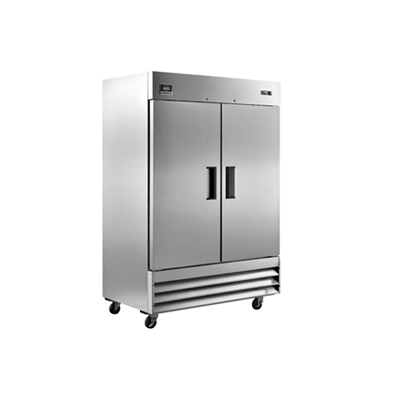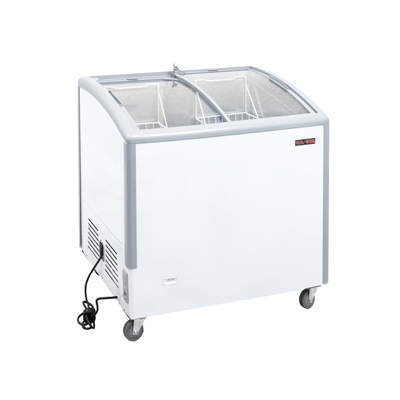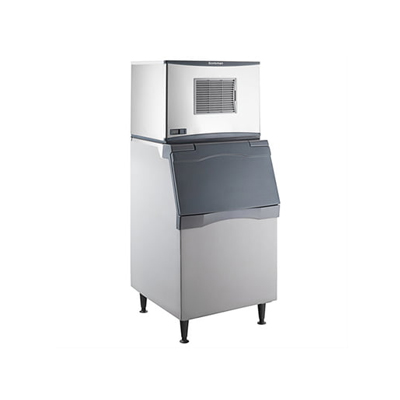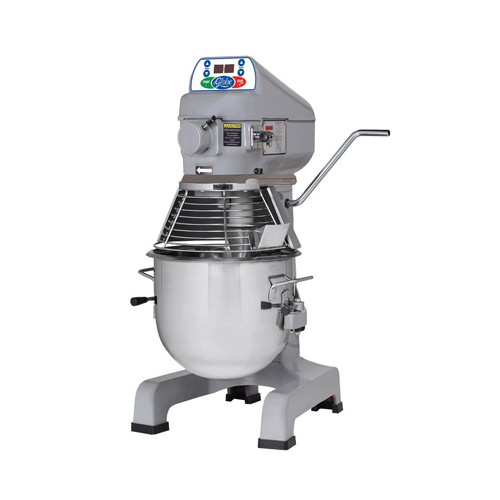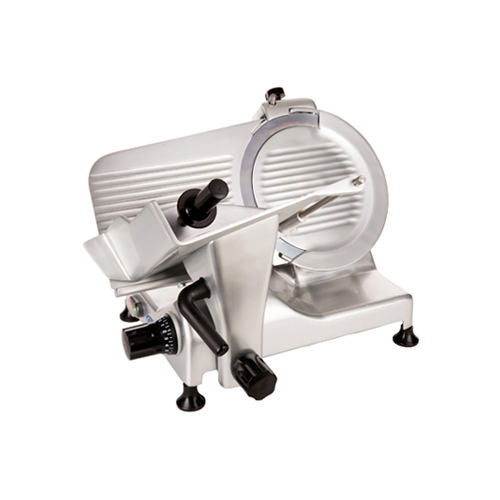Top Commercial Dishwashers in Canada | Expert Guide
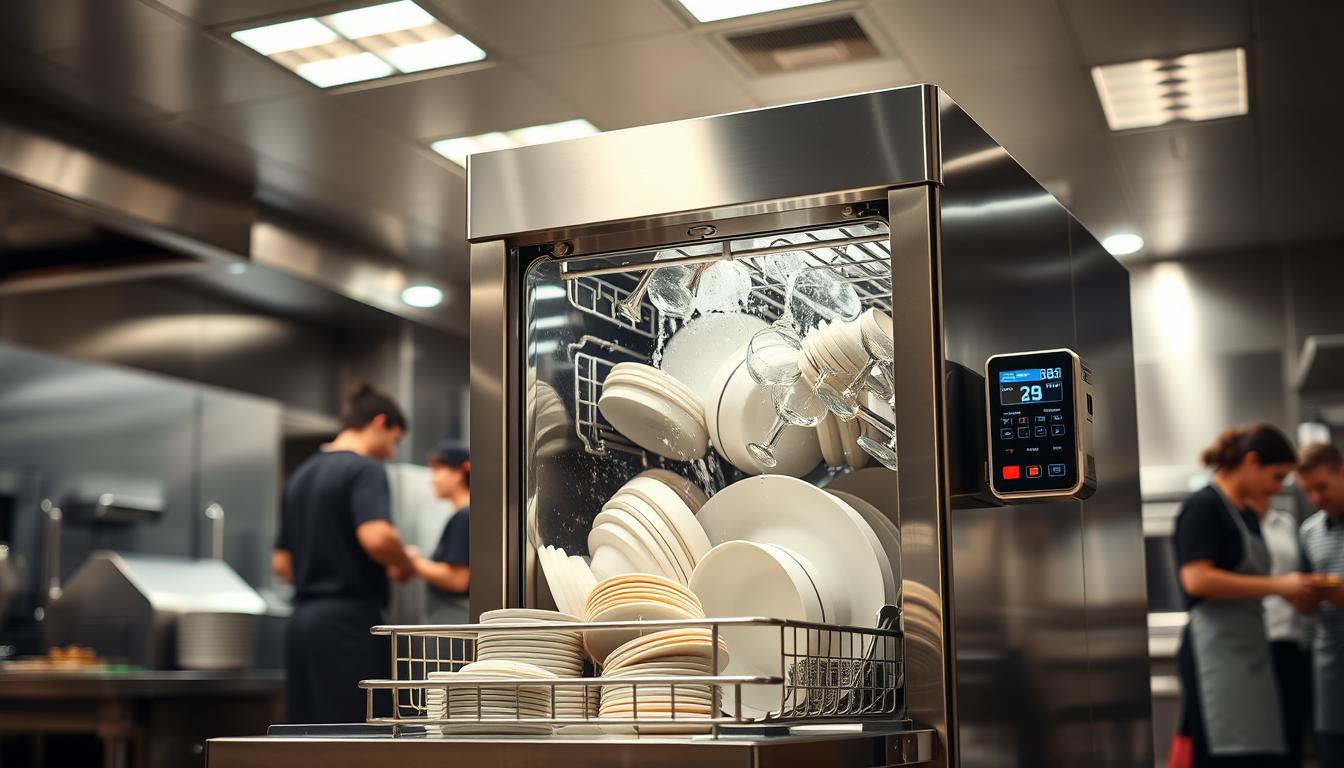
Welcome to your expert guide to the top commercial dishwashers in Canada. Did you know that over 70% of Canadian restaurants rely on high-performance dishwashers to maintain hygiene and efficiency in their kitchens? These machines are more than just appliances—they’re essential for ensuring food safety and streamlining operations.
In a fast-paced kitchen, a reliable dishwasher is your best ally. It ensures dinnerware and utensils are not only clean but also sanitized to the highest standards. Efficiency and reliability are non-negotiable when it comes to commercial kitchen equipment. A high-quality dishwasher can transform your restaurant’s workflow, reducing downtime and improving customer satisfaction.
With so many models and configurations available, finding the right dishwasher for your needs can feel overwhelming. That’s where Babak Food Equipment comes in—as your trusted partner in commercial kitchen solutions. Whether you’re running a bustling restaurant or a small café, we’ve got you covered. Ready to elevate your kitchen’s performance? Call us today for personalized recommendations and expertise.
Understanding Commercial Dishwashers in Canadian Kitchens
Warewashing systems are the backbone of modern Canadian kitchens, ensuring cleanliness and efficiency. These systems use high-temperature water and detergents to remove debris and bacteria, making them essential for food safety.
In busy kitchens, dishwashing systems maintain sanitation and efficiency. High-temperature water, often reaching 180°F, sanitizes dishes without chemicals, while detergents break down grease and food residue. This process ensures dishes are spotless and bacteria-free.
| Feature | Details | Benefits |
|---|---|---|
| High-Temperature Water | Operates at 180°F | Sanitizes without chemicals |
| Detergents | Breaks down grease | Ensures thorough cleaning |
| Efficiency | Quick cycle times | Reduces kitchen downtime |
These systems are crucial for maintaining hygiene standards in Canadian restaurants. By combining high-temperature water and effective detergents, they ensure dishes are clean and safe for use.
Key Features of Top Commercial Dishwashers
When selecting a machine for your kitchen, it’s essential to focus on models that combine durability with cutting-edge technology. A well-built dishwasher is not just an appliance; it’s a long-term investment in your business’s efficiency.
Modern dishwashers boast innovative features like advanced sensors that detect soil levels and optimize water usage. These machines are designed with a robust build to withstand the demands of high-volume kitchens. Energy efficiency is another critical factor, as it helps reduce operational costs over time.
| Feature | Details | Benefits |
|---|---|---|
| Advanced Sensors | Detect soil levels and optimize water | Enhances efficiency and reduces waste |
| Durable Build | Stainless steel construction | Ensures longevity and withstands heavy use |
| Energy Efficiency | Low water and power consumption | Lowers operational costs and environmental impact |
For more insights, check out this buyer’s guide or explore top-rated models at Babak Food Equipment.
Types of Commercial Dishwashers: An In-Depth Look
Choosing the right dishwasher for your kitchen can make a significant difference in efficiency and cleanliness. With various options available, understanding each type helps you select the best fit for your needs.
Conveyor Dishwashers Explained
Conveyor dishwashers are ideal for high-volume operations, capable of processing up to 1,000 dish racks daily. They use a conveyor belt to move dishes through the system, ensuring continuous cleaning. These models are perfect for large restaurants due to their fast cycle times and high capacity.
Their efficiency is enhanced by advanced sensors that optimize water usage, making them environmentally friendly while reducing costs. Conveyor dishwashers are built with durable materials like stainless steel, ensuring long-term reliability in busy kitchens.
Glass Washers for Bars and Pubs
Glass washers are specialized for delicate glassware, making them essential for bars and pubs. They can clean up to 2,000 glasses per hour, with each cycle taking about 90 seconds. This quick process ensures glasses are spotless and ready for immediate use.
These washers are designed with gentle cycles to prevent breakage, while high temperatures sanitize the glassware. This combination makes them a must-have for establishments that prioritize both hygiene and the presentation of their beverages.
Using purpose-built equipment like conveyor dishwashers or glass washers offers specific benefits. Conveyor models excel in high-volume settings, reducing downtime and operational costs. Glass washers, with their precise cleaning and gentle handling, are ideal for delicate items, ensuring they remain in pristine condition.
For more insights on selecting the right dishwasher, visit Babak Food Equipment to explore top-rated models and expert recommendations.
High-Temperature vs. Low-Temperature Cleaning Systems
When it comes to cleaning systems, temperature plays a crucial role in determining efficiency and effectiveness. High-temperature systems operate at 150°F–165°F during wash cycles and 165°F–180°F during rinse cycles, ensuring superior sanitization. These systems are ideal for high-volume kitchens where grease and heavy soil are common, as they remove tough residue more effectively.
In contrast, low-temperature systems work at 120°F–145°F and rely on chemical sanitizers like chlorine or iodine. While these systems are more energy-efficient and cost-effective for smaller operations, they may require more frequent chemical refills, adding to long-term expenses.

High-temperature systems meet most health department standards and are perfect for large restaurants with heavy demands. However, they often need a booster heater and consume more energy. Low-temperature systems, while better for cafes or low-volume kitchens, may not handle heavy grease as well and require careful chemical management.
Choosing the right system depends on your kitchen’s size, budget, and specific needs. High-temperature systems excel in high-volume, high-grease environments, while low-temperature systems are more suited for smaller, less demanding settings. Understanding these differences helps you make an informed decision that balances efficiency, cost, and sanitization standards.
The Importance of Sanitizing and Warewashing in Busy Kitchens
Sanitizing is the cornerstone of kitchen safety, ensuring every utensil and surface is free from harmful bacteria. In busy kitchens, where utensils are constantly in use, meticulous sanitizing practices are non-negotiable to prevent contamination and maintain hygiene standards.
Advanced warewashing equipment plays a vital role in this process. These machines come equipped with built-in sanitizing cycles that ensure all utensils are safe for food contact. Detergents are a crucial component, breaking down tough grease and food residue effectively. When combined with high-temperature water, they create a powerful cleaning system that leaves utensils spotless and sanitized.
Rigorous warewashing protocols are essential for upholding food safety standards. For instance, high-temperature systems operate at 180°F, ensuring utensils are not only clean but also sanitized to the highest standards. This level of sanitization is particularly important in busy kitchens where utensils are reused frequently throughout the day.
Each component in the warewashing process plays a specific role. Detergents target and break down grease, while high-temperature water ensures thorough sanitization. Together, they work to maintain a clean and safe environment, protecting both staff and patrons from potential health risks.
Empowering yourself with knowledge about proper cleaning practices can transform your kitchen’s hygiene standards. By understanding how detergents and sanitizing cycles work together, you can ensure your utensils are always clean and safe for use. This not only boosts efficiency but also enhances the overall dining experience for your customers.
For more insights on maintaining cleanliness in your kitchen, visit Babak Food Equipment to explore expert tips and recommendations on warewashing best practices.
How a Commercial Dishwasher Enhances Operational Efficiency
In the fast-paced environment of Canadian kitchens, operational efficiency is key to maintaining smooth operations and customer satisfaction. A well-chosen dishwasher can significantly streamline your workflow, saving valuable time and resources.

Labor-Saving Benefits
Modern dishwashers are designed to minimize manual labor, allowing your staff to focus on more critical tasks. With advanced features like booster heaters and optimized models, these machines can process up to 400 racks per hour, drastically reducing cycle times.
By automating the dishwashing process, you save hours of labor each day. This not only cuts labor costs but also enhances overall efficiency. For example, a high-efficiency model with a booster heater can sanitize dishes at 180°F, ensuring they’re clean and ready for reuse quickly.
| Feature | Details | Benefits |
|---|---|---|
| Booster Heater | Sanitizes at 180°F | Reduces cycle time by up to 30% |
| Optimized Models | Processes 400 racks/hour | Cuts labor hours significantly |
| Advanced Sensors | Automates water usage | Reduces operational costs |
Restaurants that upgrade to these systems often see a noticeable improvement in service speed and staff productivity. By integrating such technology, you can create a more efficient and profitable kitchen environment.
Selecting the Right Commercial Dishwasher for Your Business
Choosing the perfect dishwasher for your business is a critical decision that impacts efficiency, hygiene, and long-term costs. With so many options available, it’s essential to evaluate your specific needs and budget to make an informed choice.
Evaluating Kitchen Needs
Start by assessing your kitchen’s size and layout. For smaller spaces, an undercounter glasswasher is ideal, handling up to 55 racks per hour. Larger operations may benefit from a conveyor model, which can process up to 1,000 racks daily. Consider peak times and the type of items you wash most frequently—delicate glassware may require a specialized unit.
Assessing Budget and ROI
While the initial price is important, focus on long-term value. High-efficiency models may cost more upfront but save on water and energy. Compare features like temperature settings and cycle times to ensure they align with your needs. For example, a high-temperature undercounter model offers superior sanitization, crucial for busy kitchens.
| Type | Features | Benefits |
|---|---|---|
| Undercounter Glasswasher | Compact design, gentle cycles | Perfect for small spaces, delicate items |
| Conveyor Dishwasher | High capacity, continuous operation | Efficient for large-scale operations |
| High-Temperature Undercounter | Sanitizes at 180°F | Meets health standards, reduces downtime |
By balancing your kitchen’s needs with your budget, you can select a dishwasher that enhances efficiency and supports your business’s growth. Remember, the right choice is an investment in your kitchen’s future.
The Role of High Temperature in Dishwashing Performance
Temperature plays a pivotal role in ensuring the effectiveness of your dishwashing process. High-temperature settings are not just a preference; they are a necessity for maintaining hygiene and efficiency in Canadian kitchens.

High temperatures are scientifically proven to eliminate harmful bacteria, making them essential for food safety. For instance, wash cycles operating between 150°F and 165°F, coupled with rinse cycles at 180°F to 190°F, ensure that 99.999% of microorganisms are eradicated, meeting stringent NSF and DIN standards.
Heaters in modern dishwashing systems are designed to optimize performance by raising water temperatures to these required levels. This integration ensures that dishes are not only clean but also sanitized to the highest standards, which is crucial for preventing contamination and maintaining hygiene.
“High-temperature dishwashing systems are the cornerstone of food safety, ensuring that every utensil is free from harmful bacteria and ready for safe use.”
By understanding the role of temperature in your dishwashing process, you can make informed decisions about the equipment that best suits your kitchen’s needs, ensuring both efficiency and compliance with food safety regulations.
Technological Innovations in Modern Dishwashing Equipment
Modern dishwashing equipment has evolved significantly, offering cutting-edge features that enhance efficiency and reliability. These advancements ensure that your kitchen remains competitive and cost-effective. Let’s explore the latest innovations that are transforming the dishwashing landscape.
Advanced Sensors and Controls
One of the most notable innovations is the integration of advanced sensors and control systems. These sensors detect soil levels, water temperature, and detergent usage, optimizing each wash cycle. By automating these processes, modern equipment reduces water and energy waste, making your operations more sustainable. For instance, some models adjust water flow based on the soil level, ensuring minimal resource usage without compromising cleanliness.
Energy Efficiency Features
Energy efficiency is another cornerstone of modern dishwashing systems. Many models now boast ENERGY STAR certification, using up to 40% less water and energy than traditional units. Technologies like Drain Water Energy Recovery (DWeR) further enhance efficiency by recovering heat from drain water, reducing the booster heater’s workload. These features not only lower utility costs but also promote environmental sustainability.
These technological advancements are designed to keep your kitchen ahead of the curve. With smarter sensors and energy-saving designs, modern dishwashing equipment offers unparalleled performance. By investing in these innovations, you can enhance your kitchen’s efficiency, reduce operational costs, and contribute to a more sustainable future.
Maintenance Tips for Long-Lasting Dishwasher Performance
Regular maintenance is key to ensuring your dishwasher runs efficiently and lasts longer. By following simple routines, you can prevent breakdowns and keep your equipment in top shape.
Start with daily cleaning tasks like removing food debris and wiping down surfaces. Weekly, inspect and clean internal components, paying special attention to door seals to prevent leaks. Monthly, descale your dishwasher to avoid limescale buildup, especially in hard water areas.
Scheduling professional servicing at least once a year is crucial. Technicians can spot potential issues early, saving you from costly repairs later. Additionally, using high-quality detergents and ensuring proper loading can enhance efficiency and reduce wear and tear on your machine.
Remember, a small investment in maintenance can lead to significant long-term savings. By caring for your dishwasher’s door and seals, and keeping up with regular servicing, you ensure your kitchen remains efficient and hygienic.
Troubleshooting Common Dishwasher Issues
Encountering problems with your dishwasher can disrupt kitchen operations. Fortunately, many issues can be resolved with simple troubleshooting. Let’s explore common problems and how to address them.
Diagnosing Temperature Problems
Temperature issues are a frequent concern. If your dishes aren’t coming out hot enough, check the temperature settings and ensure they meet health standards. Low temp settings can leave dishes unclean. For high-temp systems, verify that the booster heater is functioning correctly.
| Issue | Cause | Solution |
|---|---|---|
| Dirty Dishes | Incorrect temp settings or improper loading | Adjust temp, ensure proper loading |
| Poor Cleaning | Clogged spray arms or filter | Clean spray arms and filter |
| Leaks | Damaged door seals | Inspect and replace seals |
When to Call for Professional Service
While many issues can be fixed in-house, some require expert attention. If you notice persistent temp fluctuations, water leaks, or poor performance despite troubleshooting, it’s time to call a professional. Technicians can diagnose complex problems, ensuring your equipment runs smoothly and safely.
By addressing these common issues, you can maintain efficiency and extend your dishwasher’s lifespan. Knowing when to seek professional service ensures your kitchen remains operational and hygienic.
An Overview of Undercounter Dishwasher Models
Undercounter dishwasher models are compact, space-saving solutions designed for smaller or specialized kitchens. These units are perfect for cafes, bars, and small restaurants where floor space is limited but efficiency is key. Their slim design allows them to fit seamlessly under countertops, making them a practical choice for busy environments.
One of the standout benefits of undercounter models is their ability to save space without compromising on performance. They offer high efficiency, processing between 20 and 45 racks per hour, which is ideal for smaller operations. These dishwashers are also known for their quick cycle times, ensuring that your kitchen stays efficient even during peak hours.
What sets undercounter models apart is their advanced temperature control. Many feature high-temperature settings, reaching up to 180°F, which is essential for meeting health standards. Temperature undercounter models are particularly effective in sanitizing dishes, making them a must-have for maintaining hygiene in smaller kitchens.
For installation, undercounter dishwashers require minimal space and can be easily integrated into existing layouts. Regular maintenance is straightforward, with daily cleaning of filters and monthly descaling to prevent limescale buildup. This ensures optimal performance and longevity of the equipment.
Restaurants like cozy bistros and specialty bars have seen significant benefits from undercounter dishwashers. They allow staff to focus on food preparation rather than manual washing, boosting overall efficiency. For more insights on selecting the right model, check out our buyer’s guide.

“Undercounter dishwashers are a game-changer for smaller kitchens, combining space efficiency with powerful performance.”
Comparing Rack Configurations for Optimal Cleaning
When it comes to achieving spotless results in your kitchen, the rack configuration of your dishwashing system plays a crucial role. Different rack setups are designed to cater to various needs, ensuring efficiency and thorough cleaning. Let’s explore how these configurations can enhance your dishwashing process.
Design and Efficiency of Various Racks
Rack design significantly impacts both the effectiveness and speed of cleaning. A well-designed rack ensures dishes are properly spaced, allowing water and detergent to reach all surfaces. This design not only improves cleaning quality but also reduces the risk of damage to delicate items.
For instance, single-rack systems are ideal for small-scale operations, handling up to 55 racks per hour. They are perfect for cafes or food trucks where space and capacity are limited. On the other hand, double-rack systems offer increased efficiency, suitable for medium-sized kitchens that require handling more dishes without compromising on space.
Understanding Rack Hour Metrics
Rack hour metrics are essential for assessing operational efficiency. High-capacity models, such as conveyor dishwashers, can process up to 1,000 racks daily, making them ideal for large restaurants. These metrics help you understand how quickly and effectively your system can handle peak loads, ensuring smooth kitchen operations.
Benefits of Door Type Configurations
The type of door on your dishwashing system can also influence cleaning results. For example, a pass-through model allows for continuous loading and unloading, optimizing workflow in busy kitchens. Meanwhile, a door with a soft-close feature can reduce noise and prevent accidental damage to dishes or the machine itself.
| Rack Type | Capacity | Benefits |
|---|---|---|
| Single-Rack | Up to 55 racks/hour | Compact, ideal for small spaces |
| Double-Rack | Up to 100 racks/hour | Efficient for medium-sized kitchens |
| Conveyor | Up to 1,000 racks/hour | High-volume capacity, continuous operation |
Choosing the right rack configuration depends on your kitchen’s specific needs. Whether you prioritize space efficiency, high capacity, or gentle handling of delicate items, there’s a rack design that fits your requirements. By understanding these configurations, you can optimize your dishwashing process, ensuring efficiency and hygiene in your kitchen.
Spotlight on Moyer Diebel and Jet Tech Systems
When it comes to high-performance dishwashing solutions, Moyer Diebel and Jet Tech systems stand out as industry leaders. Both brands are recognized for their innovative approaches and real-world performance, making them top choices for Canadian kitchens.
Moyer Diebel is renowned for its advanced engineering and durability. Their MD2000 HR door-type dishwasher, for instance, processes 36 racks per hour using just 0.90 gallons of water per cycle. This model is a testament to their commitment to efficiency and sustainability.

Jet Tech, on the other hand, excels in cutting-edge technology. Their systems integrate smart sensors and energy recovery features, optimizing water and energy use. Jet Tech’s focus on innovation ensures superior cleaning results while minimizing environmental impact.
| Brand | Model | Key Features | Benefits |
|---|---|---|---|
| Moyer Diebel | MD2000 HR | High-speed processing, low water consumption | Efficient for high-volume kitchens |
| Jet Tech | Advanced Sensors | Optimized resource usage, smart diagnostics | Reduces operational costs |
Both Moyer Diebel and Jet Tech offer tangible benefits, from faster cycle times to eco-friendly designs. Choosing these industry-recognized solutions can elevate your kitchen’s efficiency and performance.
Babak Food Equipment: Your Trusted Partner in Commercial Dishwasher Solutions
Looking for a reliable partner to enhance your kitchen’s efficiency? Babak Food Equipment is here to provide tailored solutions that simplify your operations. With years of expertise, we understand the unique challenges Canadian restaurants face and are dedicated to helping you find the perfect equipment for your needs.
“Our goal is to make your kitchen operations seamless and efficient. We believe in providing more than just equipment—we deliver solutions that grow with your business.”
Whether you’re running a bustling restaurant or a cozy café, our team offers personalized advice to ensure you get the right tools. Need expert guidance? Call us directly at 604-566-9747 for tailored recommendations and support.
| Benefits | Details |
|---|---|
| Expert Guidance | Personalized recommendations |
| Comprehensive Solutions | Custom-tailored equipment |
| Trusted Support | Dedicated customer service |
At Babak Food Equipment, we’re committed to helping you select the best equipment for your kitchen. Let us be your partner in enhancing efficiency and streamlining your operations.
Conclusion
After exploring the essential aspects of modern dishwashing systems, it’s clear that selecting the right equipment is a cornerstone of efficient kitchen operations. High-performance solutions not only enhance hygiene but also streamline workflows, ensuring your kitchen runs smoothly during peak times.
Key innovations like advanced sensors and energy-efficient designs have redefined dishwashing, offering unprecedented efficiency. Proper maintenance routines, such as daily cleaning and regular servicing, play a vital role in extending the lifespan of your equipment and ensuring optimal performance.
By understanding your kitchen’s specific needs and investing in quality solutions, you can make an informed decision that elevates your operations. Remember, the right equipment is more than an appliance—it’s a long-term investment in your business’s success.
Ready to transform your kitchen? Contact Babak Food Equipment today at 604-566-9747 for personalized guidance and expertise in selecting the perfect dishwashing solution for your needs.


